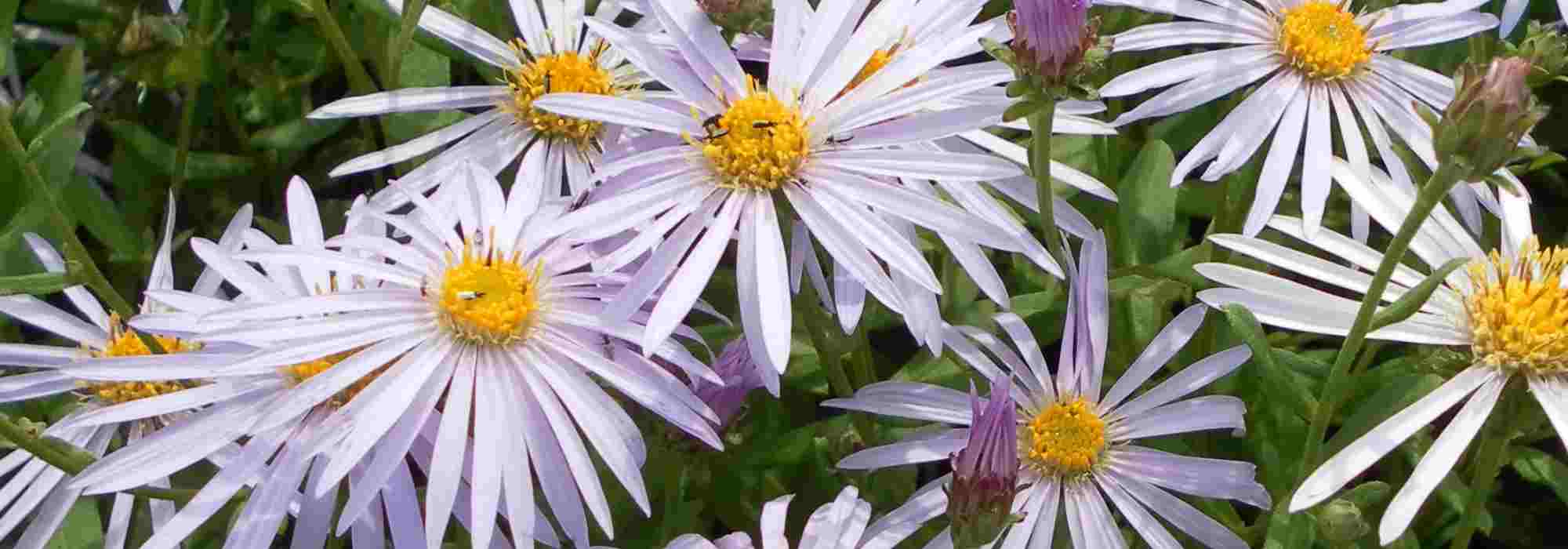
Disease-resistant asters
A selection of the 7 most disease-resistant asters
Contents
Asters are magnificent perennials that offer spectacular flowering in spring, summer, or autumn depending on the variety. They are very interesting in the garden due to their hardiness and melliferous potential. There are countless varieties of Asters, making it not always easy to choose. The vast majority of Asters do not have any particular issues; however, some families of Asters can be susceptible to certain diseases, notably powdery mildew or rust. We have selected 7 particularly resilient varieties of Asters for you.
Aster ericoides 'Blue Star'
The Aster ericoides ‘Blue Star’ is a variety that is never diseased and does not require staking. It forms an upright, bushy plant 80 cm tall and 50 cm wide, covered in small, very decorative dark green leaves. Its abundant flowering begins in late July and continues until early November. It produces beautiful panicles of small pale lavender-blue flowers surrounding a brown centre. This aster prefers to be planted in ordinary, clayey or stony soil that is cool, well-drained, and tolerates occasional drought. It will make a stunning addition to a cottage or English garden, alongside miscanthus, bush sage, Muhlenbergia capillaris, echinaceas, and a few bulbs of Croscomias.
Aster ageratoides 'Ezo Murasaki'
In addition to being resistant to powdery mildew, the Aster ageratoides ‘Ezo Murasaki’ stands out for its superb late flowering in October-November, even during frosts. Its numerous small flowers are available in purple-violet tones with a golden centre. Easy to grow and hardy, it thrives in ordinary, even poor, heavy, clayey, and relatively dry soil. With its compact habit, it forms a ball of 60 cm in all directions. Provide it with a sunny, part-shaded, or dry shaded location. Plant it in a border with Miscanthus, Persicarias, Calamagrostis, and garden Chrysanthemums.
Discover other Asters
View all →Available in 1 sizes
Available in 0 sizes
Available in 2 sizes
Available in 2 sizes
Available in 1 sizes
Available in 1 sizes
Available in 0 sizes
Available in 1 sizes
Available in 1 sizes
Available in 1 sizes
Aster novae-angliae 'Violetta'
Aster novae-angliae (Symphyotrichum novae-angliae) ‘Violetta’ is known for its ease of cultivation and good resistance to diseases. It blooms from August to October, offering a multitude of bright violet flowers. This variety forms a vigorous clump, reaching 1.5 m in height and 50 cm in width. It enjoys full sun but tolerates light shade, sheltered from strong winds. Its large size and the weight of its numerous flowers may require staking. This aster prefers to be planted in rich, well-drained soil that remains cool. It also tolerates heavy, moderately moist soils. In the garden, it will make a stunning display at the back of a border alongside ornamental grasses, helianthus, coneflowers, and garden chrysanthemums.
Read also
Choosing, planting and caring for astersAster cordifolius 'Little Carlow'
Aster cordifolius ‘Little Carlow’ is an interesting variety due to its great hardiness and disease resistance. It offers us an abundant flowering in clusters from September to October. Its lovely small lavender-blue flowers surround a golden-brown centre. This aster thrives in ordinary, rich soil that remains moist without excess. It enjoys a position in full sun or light partial shade, sheltered from strong winds. Its upright habit reaches 90 cm in height and 40 cm in width and may require staking. You can plant it in borders alongside Sages, small varieties of spindle, helianthus, Crocosmias, and ornamental grasses.
Aster pyrenaeus 'Lutetia'
The Aster pyrenaeus ‘Lutetia’ is one of the easy-to-grow, hardy varieties that are resistant to powdery mildew. Highly floriferous, it produces a multitude of large, lovely lavender-blue flowers from July to September. Resembling daisies, these flowers bloom atop long, upright, and flexible stems reaching 60 cm in height. This aster will naturally fit into a border or a sunny rock garden, even in light partial shade. It will thrive in ordinary, fresh to moist, calcareous, and even stony soil. You can pair it with a grass such as Miscanthus, a Kniphofia, and an Achillea.

The Aster pyrenaeus ‘Lutetia’ offers large lavender-blue flowers
Aster ageratoides 'Starshine'
Aster ageratoides ‘Starshine’ forms a lovely compact bush of 40 cm in all directions. Very resilient and easy to grow, it is resistant to powdery mildew. It offers a flowering display of white flowers with a yellow centre from July to October. It enjoys being planted in full sun and also tolerates light partial shade. Not demanding, it will be satisfied with ordinary, even poor, compact or clay soil. It prefers rather cool and well-drained soil but tolerates occasional drought. You can plant this beautiful aster in pots, in borders, or in perennial beds, alongside heucheras, small grasses, and lady’s mantle.
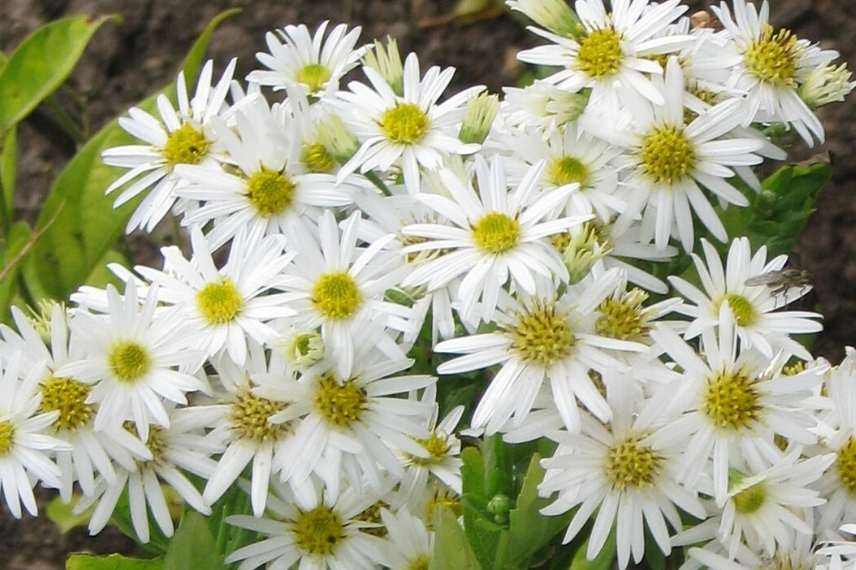
Aster ageratoides ‘Starshine’ (photo by Peganum)
Aster 'Le Vasterival'
The Aster ‘Le Vasterival’ is a hybrid variety known for its disease resistance. From September to October, it produces a profusion of small pale mauve flowers with a golden-brown centre. Its dark green foliage is supported by very decorative dark plum stems. It forms a tall, upright clump that can exceed 90 cm in height and 50 cm in spread. You can plant this aster in full sun, in ordinary soil, even poor or calcareous, as long as it is not too heavy, well-drained, and loose. This perennial will make a stunning addition to a romantic or natural border, alongside grasses, bushy sages, a small spindle, and helianthus.
For further reading
- Discover our different Aster varieties.
- To learn everything about asters, read our article: Asters: how to plant, grow, and maintain.
- Autumn Asters: 3 points to choose and succeed with them!
- Find our technique and advice on how to stake an Aster.
- Discover 10 ideas for pairing Asters.
- Subscribe!
- Contents
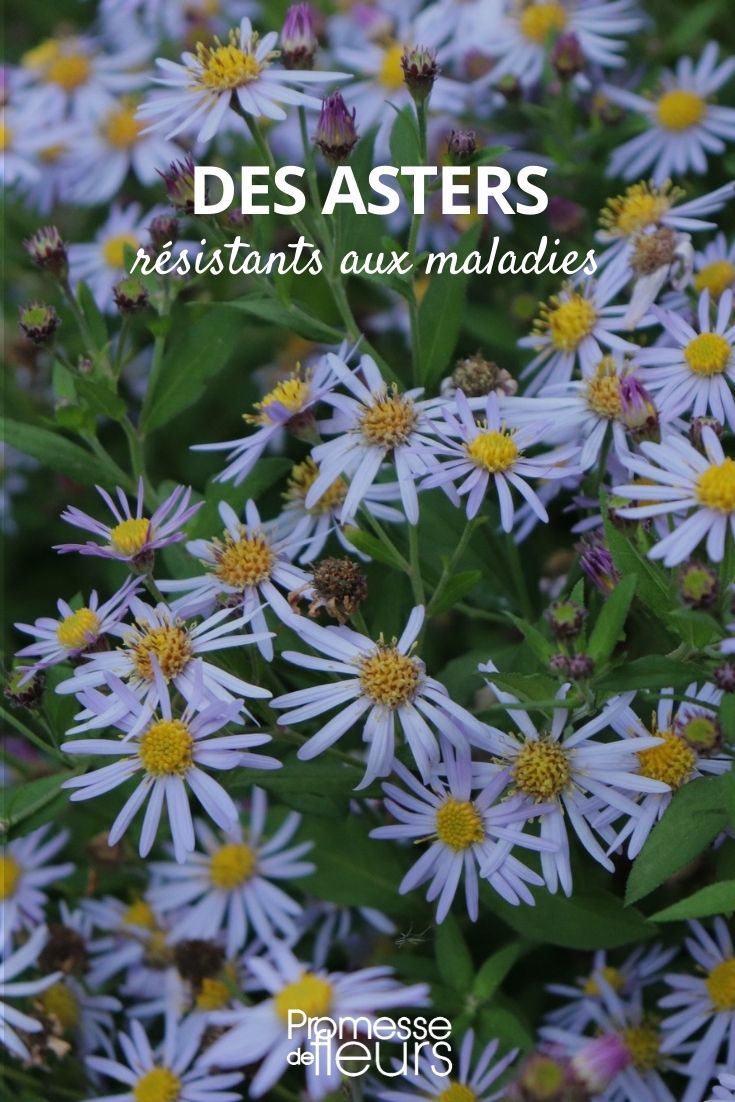
































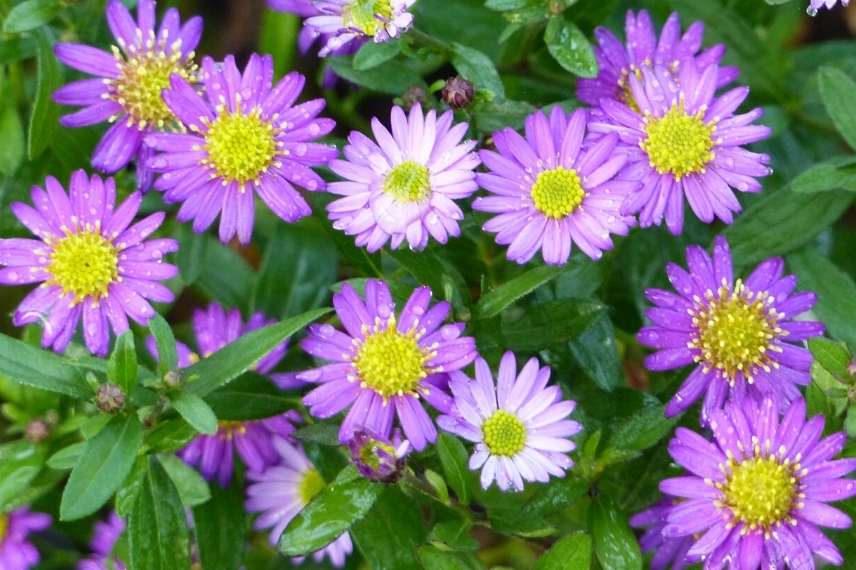
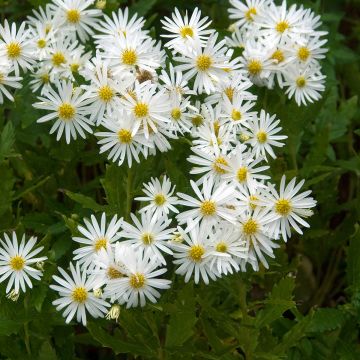
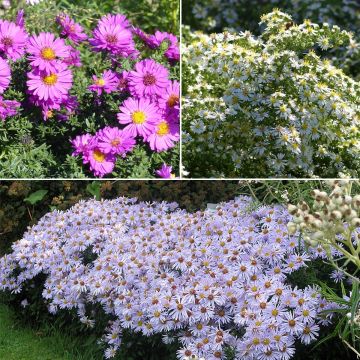


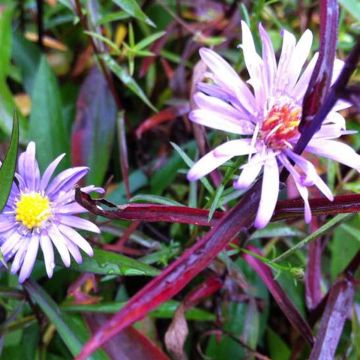
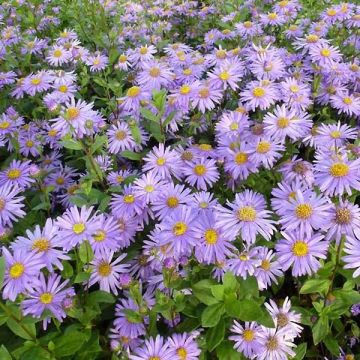
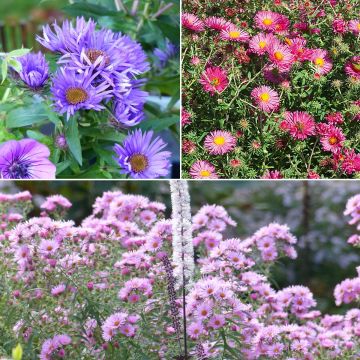

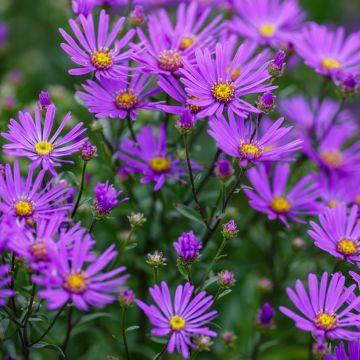

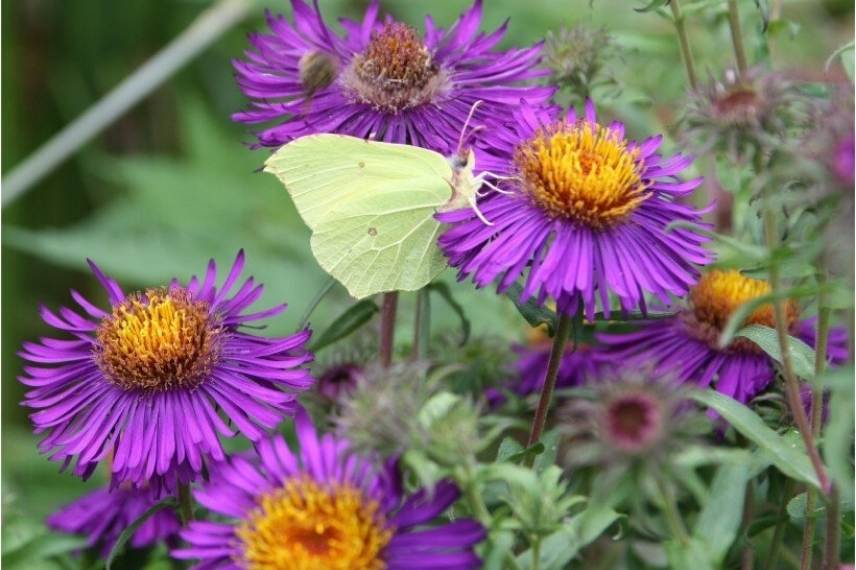
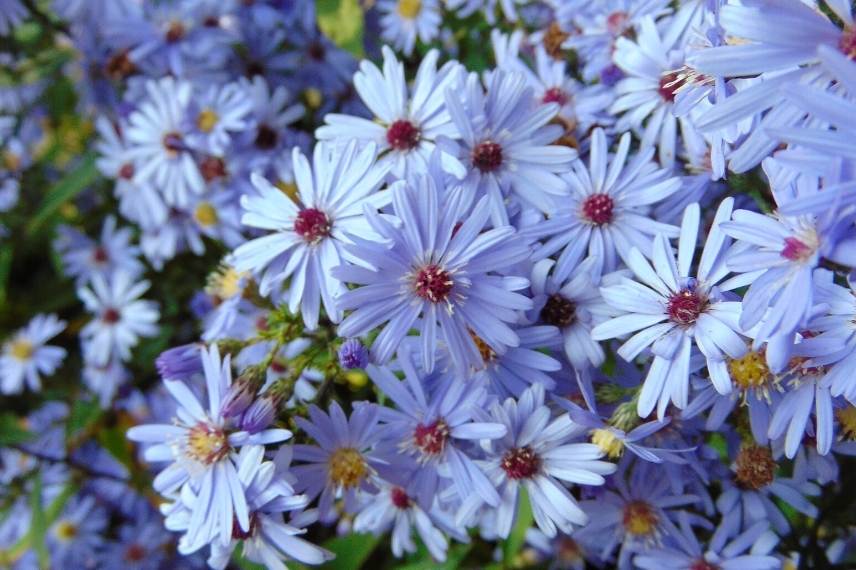
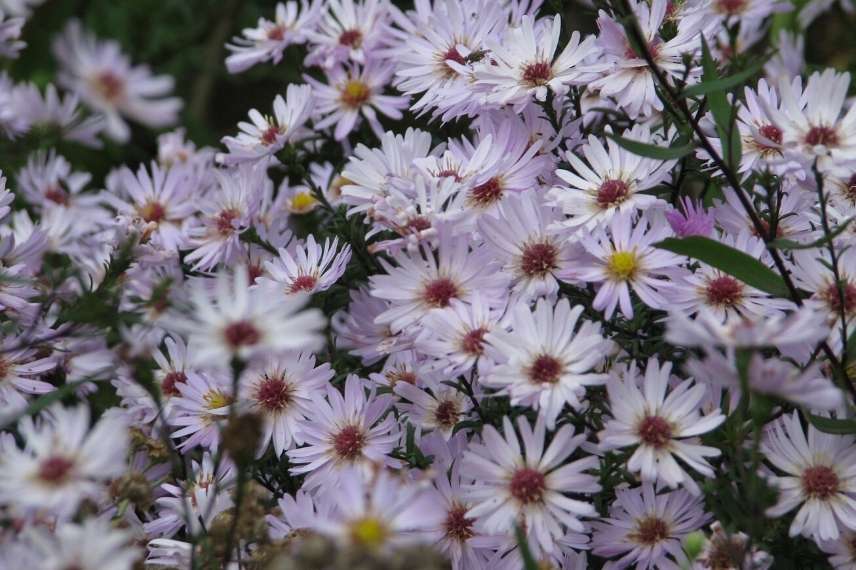
Comments